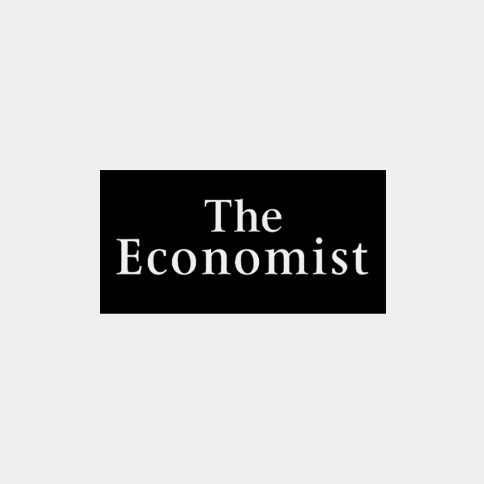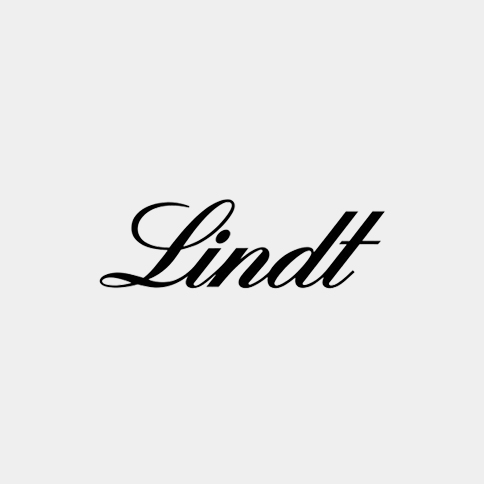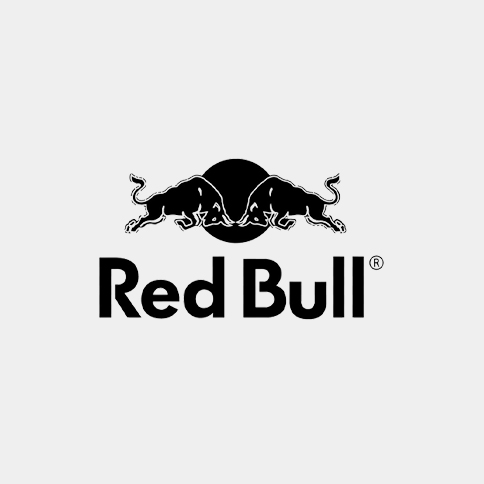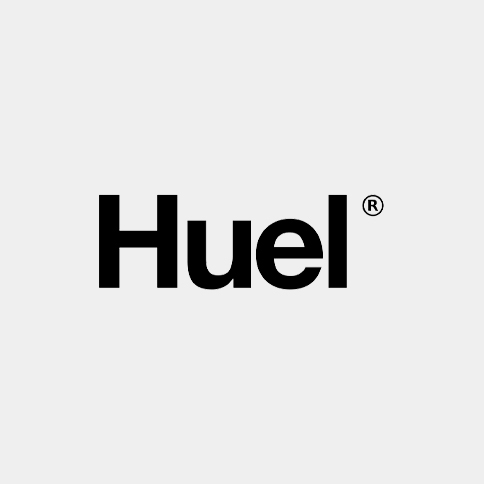Top 20 Influencer Marketing statistics that we think you should know about for 2024.
Influencer marketing has become an incredibly powerful channel for brands to reach their audiences beyond standard digital marketing channels such as Meta and TikTok. Influencer Marketing means brands can
find influencers who have a specific audience who are likely to be interested in their brand. In addition, good influencers will have a highly engaged and trusted audience who are likely to view and take note of the content they are publishing making conversions likely. The key is choosing an influencer that is specific to your brand and whose audience is engaged and likely to be interested in your brand.
Brands can collaborate with influencers in several ways. The most common is influencers posting content about the product of their brand to their audiences. Influencers will typically charge to create and post a set number of pieces of content. This can be in the form of videos, posts, links within bios and more. Secondly, the brand may use the influencer's account to run paid content to reach customers outside of their influencer audience but improve engagement compared to the brand running adverts from their account. Finally, influencers and celebrities have been known to release their own named collections to create more formal and permanent collaborations between brands and influencers. There are 4 different types of influencers based on their audience size. There can be benefits for both choosing smaller audiences who have small but highly specific and engaged users or much larger audiences whose community may be broader. Similarly, in academic marketing, services like an
essay writing service with native writers rely on trusted voices—such as student influencers or academic bloggers—to build credibility and connect with a broader, engaged student audience. In the same way, brands can use tools like an
AI image detector to ensure influencer-generated visuals remain authentic and aligned with their reputation.
There are 4 different types of influencers based on their audience size. There can be benefits for both choosing smaller audiences who have small but highly specific and engaged users or much larger audiences whose community may be broader.
Nano Influencers – 1-10k followers.
Micro-Influencers – 10-100k followers.
Macro Influencers – 100k-1 Million followers.
Mega Influencers – 1 Million+ followers.
The smaller the audience, the cheaper that the fees are likely to be so a brand may leverage a larger number of smaller influencers to achieve a large but highly targetted reach. Larger influencers will typically have very high fees for a small number of posts
We've prepared our top influencer marketing statistics that we think you should know about when running an influencer marketing strategy and campaign. So let's dive in!
What's included in our Influencer Marketing Statistics guide?
Top Influencer Marketing statistics
Influencer Marketing Instagram statistics
Influencer Marketing Tiktok statistics
Influencer Marketing Youtube statistics
Influencer Marketing for business statistics.
Top Influencer Marketing statistics
1. 25% of marketers use influencer marketing.
Influencer marketing is becoming incredibly popular as a key marketing channel for marketers to leverage within their strategies. In 2023, Hubspot found that 25% of marketers work with influencers to promote products and services making it more popular as a marketing channel than virtual events, webinars and social commerce.
(HubSpot) - Top Influencer Marketing Statistics
2. 69% of consumers state that they trust the recommendations that influencers give them for new products or services.
Consumers are becoming more savvy when it comes to marketing that brands publish. However, consumers often build a large amount of trust in the influencers that they follow - especially if they've followed that individual for a long time. Some marketers use an
Instagram story viewer to discreetly monitor competitor influencer campaigns interest. 69% of consumers say they trust the recommendations that influencers make to them - making a great way for brands to get in front of consumers and be taken seriously!
(Marketing Dive) - Top Influencer Marketing Statistics

3. Influencer marketing is worth 21.1 billion dollars in 2023.
4. 28% of social media experts struggle to keep up with influencer marketing trends.
Social media trends were one of the top challenges of influencer marketing. Trends can change daily and following a trend within a marketing strategy can be very challenging as it means that you need to create content as quickly as possible, otherwise, you risk missing the trend altogether.
(Statista) - Top Influencer Marketing Statistics
5. Influencer-generated posts consistently outperform branded posts, according to 60% of marketers.
It makes sense considering customers tend to trust influencers' recommendations when an influencer has built a community of followers and curated the content to be relevant and appropriate to the audience. This in turn creates a great opportunity to leverage a direct path to engaged customers. Customers become immune to overly branded content which is why influencer content outperforms branded.
(Media Kix) - TikTok Statistics
Influencer Marketing Instagram statistics
6. The brand value of Instagram amounted to 47.4 billion U.S. dollars. A year earlier, the value stood at 33.48 billion dollars. Instagram was the sixth most valuable media brand worldwide in 2023.
The value of Instagram to brands is 47.4 billion dollars in 2023, which is the 6th most valuable media brand worldwide. This platform is a great platform to consider when looking for influencers with a large and engaged following.
7. India has the most Instagram users in the world.
As of January 2023, India had a total of 229 million Instagram users, the largest Instagram audience in the world. The United States had 143 million users, and Brazil had 113 million. Indonesia, Turkey, and Japan ranked in fourth, fifth and sixth position, respectively. Brunei is the leading country for Instagram audience reach, with 92 percent of the population using the social media service.
(Statista) - Top Influencer Marketing Statistics
8. On average Instagram 4.6 of weekly posts are branded.
In 2023, the median weekly brand posts on social media app Instagram was 4.6 posts. Overall, Sports teams added an average of 15.6 posts weekly to the social network, while media brands generated an average ten posts. Additionally, retail brands posted on average 6.8 times per week, whilst fashion brands posted 6.4 times per week.
(Statista) - Top Influencer Marketing Statistics
9. The most popular type of influencer focuses on lifestyle on Instagram.
According to the findings of a study examining the state of influencer marketing on Instagram, 7.63 percent of influencers on the platform were focused on the beauty topics, making it the third most popular category among global Instagram influencers in 2022. Lifestyle was the most popular category covered by Instagram influencers that year, at an 14.32 percent share.
(Statista) - Top Influencer Marketing Statistics
10. 72% of marketers used Instagram for influencer campaigns.
In 2023, experts forecast the average time spent on TikTok to rise by 7.3%, to 55.8 minutes as more as we use our devices morea nd more.
This is expected to continue increasing in 2024, growing by 4.7%, to hit 58.4 minutes per day. Should these growth rates continue, it will likely be a year or two before the daily time spent on TikTok exceeds 100-minutes. However there is movement of reducing screen time, so time will be the decider here!
(Statista) - Top Influencer Marketing Statistics
11. There were 3.8 million posts tagged with #ad on Instagram in 2021.
Influencer Marketing Tiktok statistics
12. The value of TikTok to brands was 66 billion dollars in 2023.
TikTok/ Douyin is one of the most successful Chinese brands that have made its name beyond borders. The short video brand enjoyed immense popularity around the world, surpassing Instagram and WhatsApp to be the most downloaded mobile app in 2022. In 2023, the brand value of TikTok/Douyin amounted to 66 billion U.S. dollars. It was the most valuable unicorn worldwide in 2022 with a market cap of 200 billion U.S. dollars. No wonder the
(Statista) - Top Influencer Marketing Statistics
13. Macro-influencer posts receive over 38K views on average.
The post of a TikTok mega-influencer with more than one million followers received an average of 329,382 views worldwide in 2022. The post of a macro-influencer with 100,000 to one million followers received an average of 38,517 views.
(Statista) - Top Influencer Marketing Statistics
14. The average max price for a TikTok post was $3,500
The average minimum price per post of TikTok mega-influencers with more than one million followers worldwide was 1,200 U.S. dollars in 2022. The average minimum price per post of macro-influencers with 500,000 to one million followers was 150 U.S. dollars, while the average maximum price was 3500 U.S. dollars.
(Statista) - Top Influencer Marketing Statistics
15. Micro-influencers on TikTok have an engagement rate of 12.4%.
TikTok nano-influencers with one to ten thousand followers had the highest engagement rate (ER) compared to other TikTok profiles worldwide in 2022. Nano-influencers had an ER of 15.2 percent, while micro-influencers with 10,000 to 50,000 followers came second with 12.4 percent.
(Statista) - Top Influencer Marketing Statistics
16. Shein was the most talked about brand on TikTok.
Shein was the most talked about brand on TikTok in 2022, with 37.5 thousand influencers mentioning it. Target and Sephora followed with 24.1 thousand and 19.3 thousand influencers, respectively.
Influencer Marketing Youtube statistics
17. Youtube is worth more than 29 billion dollars to brands in 2023.
In 2023, the brand value of YouTube stood at 29.71 billion U.S. dollars. A year earlier, the value was estimated at 23.89 billion dollars. YouTube is the eight most valuable media brand worldwide. Brands leverage both paid advertising to play during and before video palys, but also sponsor creators themselves to create and promote products during videos.
(Statista) - Top Influencer Marketing Statistics
18. People and blogs was the most popular category for YouTube influencers .
People and blogs was the most popular category for YouTube influencers in 2022, with 20.6 percent of them posting videos related to this topic. Entertainment and music followed with a respective influencer share of 16.8 and 13.7 percent.
(Statista) - Top Influencer Marketing Statistics
19. Engagement rates for youtube influencers ranges between 1.9 and 3.4 percent.
In 2022, YouTube influencers with between 1,000 and 5,000 followers had an engagement rate, amounting to 1.9 percent. The rate for influencers with more 1,000,000 followers was higher - 3.4 percent. The size and type of Youtube influencer you are sponsoring will effect the rate of engagement you might see.
(Statista) - Top Influencer Marketing Statistics
20. Youtube sponsored influencers cost between 1-16K USD.
The average minimum price of a sponsored YouTube video with more than one million views was 2,500 U.S. dollars in 2022. The average minimum price of a sponsored video with 500 thousand to one million views was 1,105 U.S. dollars, while the average maximum price was 16,234 U.S. dollars.
(Statista) - Top Influencer Marketing Statistics
So that's a wrap, our top statistics for influencer marketing - a top marketing channel for ecommerce brands. Influencer marketing makes a lot of sense, as customers and social media users become more and more immune to branded content. However, influencer marketing does take skill and precision to not only choose the best platforms but also to find the right influencers who are right for your business. Brands need to not only consider whether an influencer has the right community, but also community size can be a key consideration based on the goal of the influencer marketing campaign being run. You can see more statistics on
glassagram too!
Read Top Shopify Statistics 2023
Read Top Ecommerce Statistics 2023
Read Top TikTok Statistics 2023
Read Top Twitter / X Statistics 2023
Read Top Snapchat Statistics 2023
Read Top Influencer Marketing Statistics 2023
Quick Facts
1. Brands use influencer marketing as a strong commercial strategy to reach audiences they feel are a great target for their business.
2. A survey was conducted on marketers about the return that influencer marketing brings and 89% stated that they felt influencer marketing is comparable or better than other marketing channels.
3. When comparing the platforms that influencers use to market products, Instagram is the most popular platform followed by YouTube and TikTok.
4. The size of the following does have an impact on how consumers engage with content. Those with a smaller more niche following typically will have a higher engagement rate than those with huge followings.
5. The influencer marketing industry globally was worth 21.1 billion dollars in 2023 up from 13.8 billion dollars in 2021.
Quick Stats
1. Over 70% of marketers see and have found influencer marketing as a great way to increase brand awareness.
2. 87% of influencers prefer using Instagram as the platform to collaborate and work alongside brands.
3. The average engagement rate for an influencer campaign is 4.2% which is higher than traditional paid media or advertising channels.
4. Over half of consumers trust products and recommendations from influencers that they follow when they make purchasing decisions.
5. For every $1 dollar spent on influencer marketing, brands typically earn $5.20 back from sales as a result of the marketing efforts.
General FAQs
1. How fast is influencer marketing growing and what are the statistics for its growth?
Influencer marketing has seen huge growth over the last few years and is now a key marketing channel and lever used by marketers for brands within the advertising industry. Recent statistics suggest that influencer marketing has grown by almost double at 75% compared to the previous year. The rapid growth of influencer marketing is likely due to how fast social media platforms themselves are growing - making them a great place to show products and influencer buying behaviours. There is also growing trust between customers and the influencers that follow. Brands are really trusting and believing in the power of influencer marketing - it's estimated that budgets for influencer marketing have grown by 40%. These statistics alone demonstrate the huge trend of growth of the marketing channel and how effective they can be in reaching new audiences, driving brand awareness and selling more online.
2. What is the true effect on social media by influencers and do people really take note?
The effects of influencers have hit powerful levels for brands with most (85%) of social media users being influenced by the content and products shared by influencers. This statistic is from research from marketing agencies who analysed user behaviour, and engagement patterns across a multitude of social media platforms. There are several likely reasons for this trend. Firstly, brands are working tirelessly to perfect strategies to maximise their impact but also the relatability/trust between influencers results in a big impact on how followers make decisions in buying suggested products. It is estimated that the effects of influencer marketing to continue to grow in coming years.
3. What is the return on investment (ROI) of influencer marketing and how does it compare to other marketing or advertising channels?
There's a reason why brands use influencer marketing as a key marketing channel and that's because its return on investment (ROI) is higher than other types of advertising. Some studies into how influencer marketing compares show that influencer marketing can have an ROI of 11x which is much higher than print, TV ads or other digital marketing channels such as Meta, TikTok and others. Instagram and Facebook typically have a ROI or ROAS of 2-3 and Google search ads can be as high as 4-5x. The big question here is "why", it's likely because influencers work hard to build engaged and trusted relationships with their audiences over a long period meaning that followers are more likely to pay attention and be influenced by influencer's content whereas ads are typically more broad and consumers may ignore ads. Brands will typically find influencers who are personalised and appropriate to their products, making the influencer content targetted and specific for their audiences.
4. Which social media platforms are typically and most commonly used for influencer marketing campaigns?
If we look back to 2023, Instagram, TikTok & YouTube were the most common platforms used for influencer marketing campaigns. Instagram did take a prized place, the platform by nature allows creators to build strong relationships with their followers and therefore makes a natural place for influencer marketing collaborations to take place. TikTok has been incredibly fast in recent years and is seeing huge growth in collaborations with brands. Unique and authentic content is a key USP of TikTok therefore brands typically will find using current creators as a more trusted way to reach targetted audiences than creating their content. YouTube however is a great place for brands to collaborate with influencers to create both long and short-form content. For example, tech companies share products for niche tech reviews to create content about - similar trends follow within fashion and beauty creators too!
5. What is the average engagement rate for influencer posts?
It's difficult to give an exact figure on the average engagement rate for influencer posts as it can widely depending on a variety of factors such as industry, platform, the size of the influencer's following and also when they post, and the type of content they post. That said, the average engagement rate is around 7.5% - this is a broad figure that looks across a multitude of industries, platforms and unique niches across social media platforms. When conducting a successful influencer marketing campaign, it's vital to find well-respected influencers who have authentic and engaged audiences. It's also to find influencers who are truly engaged with your product to ensure the content is real and resonates with their following.
6. What is the average marketing budget percentage allocated to influencer marketing?
Every brand will spend its marketing budget a little differently as every business's audience will typically be in different places. However, in a recent study of both marketing agencies and brands, a quarter of respondents stated they spent more than 40% of their budget on influencer marketing, and almost another quarter of respondents said they invested 10 to 20 percentage of their budget to influencer marketing. Considering the focus on paid digital marketing in recent years, this significant percentage shows that many brands take influencer marketing incredibly seriously and allocate a large amount of their budgets towards it. Social media is growing fast and the huge potential that influencers have in influencing consumers with collaborations with brands is of huge value to marketers. Therefore,
influencer marketing strategies and budget allocation is a vital part of many brand's marketing strategies.
7. Do micro-influencers or macro-influencers generate better results in terms of engagement?
It's a difficult decision to decide whether to invest marketing funds into influencers who have over 100,000 followers (macro influencers) but are usually more expensive per post or invest into micro-influencers that have between 10-100 thousand followers. Macro influencers are usually more expensive meaning your budget won't stretch across as many influencers but their reach is larger meaning each post will be seen by more people. However that said, audiences are usually more broad making this type of investment best for brand awareness. Micro-influencers typically have smaller but more engaged following meaning there is a bigger chance that the audience will be influenced by the content and purchase. You'll need to invest in more micro-influencers though to reach the same levels of a macro-influencer. A
micro influencer agency can simplify this process by identifying niche creators with highly engaged audiences, helping brands maximize their marketing impact. Most brands will typically distribute their budgets across both macro and micro-influencers where budgets allow.
8. How do the demographics of an influencer's audience affect the performance of an influencer marketing campaign?
The demographics of the audience of a particular influencer is the most important part of any influencer marketing campaign. It's vital that you understand the interests, the location, the preferences and the typical content of an influencer account to establish whether they are a suitable candidate for your campaign. Once you understand the demographics of an influencer's audience, then you can select suitable campaigns, and tailor their content and message to ensure the campaign comes across as authentic and resonates with specific target groups. Demographic understanding is vital in the influencer-choosing phase of a campaign, however, once that has been established then it's important that the content creation is consistent with the influencer's non-paid content otherwise the audience will likely not respond well and question the authenticity of the recommendation. Overall, using demographics to create influencer marketing campaigns is vital otherwise the campaign is likely to perform poorly and not deliver the desired outcome.
9. What industries benefit the most from influencer marketing?
Most industries have niche influencers sharing content from the obvious ones including fashion and beauty but also the most unique industries such as construction or medicine. However that said, some platforms work great for influencer marketing for example the beauty industry. Short-form video content on platforms such as TikTok & Instagram serves as a great canvas for
beauty marketing agency and influencers to review products, show the results and influence their audiences to buy. That said the fitness industry has seen great success with influencer marketing campaigns, as their followers trust their advice for wellness making them a great target for sharing recommended supplements, exercise equipment or classes, gyms and events too. Providing that an influencer has built an engaged and highly targetted audience that shares common values and interests then most industries are great candidates for an influencer marketing campaign. However, if the target audience is very niche then the number of influencers may be limited.
10. What are the trends for the future of influencer marketing?
Influencer marketing is predicted to continue to grow alongside the huge growth of social media. Audiences are becoming smarter about influencer marketing therefore influencers must be truthful and honest otherwise their followers with question the authenticity of the recommendation. It's predicted that brands will invest more in influencer marketing campaigns to gain more exposure to their target market. Micro-influencers are also predicted to become more dominant in brand influencer choices due to their specific, targetted and authentic relationship built with the followers allowing brands to deliver targetted micro-influencer campaigns. Lastly, it's predicted that influencers and brands will focus on building genuine connections with their audiences rather than just pushing products - this means that collaborations may be less but over longer periods and higher cost value meaning that audiences see influencers as more credible.
11. How effective is influencer marketing?
Given that most marketers report that they use influencer marketing strategies, it is likely and proven to be highly effective. Influencer marketing campaigns allow brands to find target audiences who trust the creator and use that as a gateway to reach them and influence them to make a purchase. 87% of consumers report that they have seen influencer marketing material and have been influenced when purchasing by the influencer's content. It is important to note that influencer marketing is only usually effective when the creator has built solid and authentic followers who trust their recommendations. Influencer marketing creates a natural way for people to share great products whereas traditional advert media typically has lower engagement and less trust. Influencer marketing is a highly effective strategy for brands to reach new targetted audiences.
12. How many businesses use influencer marketing?
Last year, influencer marketing grew hugely with 78% of businesses that have over 100 employees using influencer marketing campaigns within their marketing strategies. Social media has grown at a huge rate and therefore marketing opportunities with influencers have followed that fast growth trend. Businesses use influencer marketing to inject themselves into highly engaged groups of people to gain more customers and maximise sales. Therefore, in summary, large numbers of businesses use influencer marketing as a key component to their marketing strategy.
13. How much money is spent on influencer marketing campaigns?
Last year in 2023, influencer marketing campaign spend hit all new highs. Global spending on influencer marketing was 21.1 billion US dollars annually in 2023. It is still a small percentage of the 600 billion US dollars that gets spent on digital marketing every year however it's still a huge number for a relatively new way to reach customers. This number reflects the effectiveness and impact that influencers can have on consumers in immersing followers in new brands and influencing sales. It is predicted that influencer marketing spend will continue to increase in the coming years as social media popularity continues to grow and brands seek new ways to reach engaged communities through brand-creator partnerships. How much each campaign costs varies by niche, platform, and influencer. We’ve seen today that sponsored YouTube videos can cost $1K–$16K, while TikTok posts range from $150–$3,500. Guest post pricing typically runs $238–$4,530, depending on DR. As you see, the range is wide, so the cost can vary a lot
based on your budget.
14. How do influencers impact consumer behaviour?
Influencers are simply creators on social media platforms that have slowly built up followers that love their content. Influencers following are typically highly engaged and share common interests as they are following a particular account for a reason. Creating content that the audience resonates with creates a unique opportunity for commercial collaboration with brands for influencers to share information, content and reviews or products to their existing follower base. Influencers will impact consumers in a number of ways including endorsing products in posts, using the influencer's account for adverts and finally reviewing videos to teach the audience about products. These efforts can sway whether or not a viewer may be interested in the product and then go ahead and purchase - without the influencer the customer may never have even seen the product before.
15. How do I measure the success of an influencer marketing campaign?
Seeing the impact and measuring the impact of an influencer marketing campaign is vital in order to see what's working and what's not. Firstly, it's important to review the engagement rate of the content being shared by the influencer such as likes, comments and shares. It's advised to use unique URLs per influencer in order to track when a customer has come from their content - or alternatively, you can use unique discount codes to identify customers acquired from a particular influencer marketing campaign. You can also review other facts such as website traffic from social media channels, and newsletter sign-ups as a result of a particular influencer marketing campaign. There are also a number of affiliate schemes whereby influencers will earn a percentage of sales which can help you understand the source of new purchases.
16. How can I find influencers in my industry?
Finding influencers is not the easiest part of starting a new influencer marketing campaign however it is most certainly the most important part - if you choose the wrong creators then your campaign unfortunately will fail. Firstly, you will likely already be aware of some influencers in your industry so consider reaching out to them, to gain an understanding of benchmark prices. There are also a number of tools and agencies that have thorough directories of specific influencers who specialise within particular niches. You can also look at where your competitors are being tagged to identify potential new influencers who would be suitable for your brand. It's vital to find influencers who have audiences that are likely to resonate with your brand and products otherwise the collaboration content will not seem authentic and won't engage future sales.
17. How does influencer marketing impact brand awareness?
Influencer marketing can be a great way to maximise brand awareness as it harnesses a trusted individual with a considerable following telling their audience about your brand. Using the already-established credibility of influencers, brands can reach new audiences that may have never seen the brand before and influence them to purchase their products. Consumers are much more likely to trust someone that they have followed for a while compared to adverts directly from the brand as there is an already established authority between the creator and the follower. When a brand and an influencer partner - then organic content is usually created for both parties to share or use as advertising material giving longevity to the relationship and maximising the future reach to new audiences.
18. How does the size of an influencer's following affect their reach and engagement?
The influencer world can be a competitive game on who has the most followers, and follower count really does have a huge impact to whether to use creators in specific influencer marketing campaigns. However, it is important to note that the creator's audience size should be considered for different campaign goals. You'd think that the larger the audience the better, however, those with the largest numbers of followers can often have lower engagement rates compared with smaller influencers who do have fewer followers but highly targetted and engaged communities of people. Micro influencer campaigns can often be better for sales however if you are looking for brand awareness and reach then macro influencers would be the best approach. Whilst follower count is important, it's vital to understand the engagement rate to assess whether their followers are being exposed and engaging with their content.
19. How has the COVID-19 pandemic affected influencer marketing?
The COVID-19 pandemic had a huge impact on influencer marketing as consumers spent more time at home, on social media and buying new products to stay entertained. The demand for influencers jumped hugely also during this time, as brands had to focus on online channels to reach customers as in-person retail was temporarily closed. Since the pandemic spending on influencer marketing has continued to grow and brands have used influencer marketing to capture in-person events and brand activation which then translates to online campaigns and maximise reach. COVID-19 was a unique opportunity to demonstrate the effectiveness of influencer marketing and how brands can use the channel to reach and acquire new customers.
20. Who conducts research on influencer marketing statistics?
Influencer marketing statistics originates from a diverse variety of organisations within the marketing world. Sources of influencer marketing statistics include market research companies such as Statista, advertising agencies and social media platforms themselves too! All of these types of sources typically collaborate with both influencers and brands in order to gain insights into the industry and the impact the marketing channel has. This also allows them to understand the performance of campaigns, the investment lowers and engagement metrics. By sharing influencer marketing statistics, brands can understand whether the channel is a good opportunity for their business and whether or not to invest in influencers.
21. Who are the top influencers in the field of marketing?
Social media and influencer marketing move very fast making it hard to give a definite list of top influencers in the world of marketing. It's also important to note that top influencers will differ based on the industry but also the commercial goals of a campaign for reach or sales. By follower count Cristiano Ronaldo, Selena Gomez and MrBeast have millions of followers which can be a great way to reach huge audiences - however, these figures have extremely high fees for partnerships and are also very selective on who they might partner with. However, if we look at different industries Jiffpom is the most followed dog on Instagram - a great opportunity for pet brands to reach animal-obsessed audiences.
22. Who benefits the most from influencer marketing?
Influencer marketing is a hugely powerful marketing channel that can help brands reach new audiences, gain new customers and grow sales. However, it's important to remember the huge benefits that influencers themselves receive from collaborating with brands. Some influencer marketing campaigns can attract huge sums of money given to the influencer which not only promotes the brand in collaboration but also continues to boost the personal brand and social media presence of the influencer themselves. Many influencer marketing campaigns include sponsoring posts of the influencer account to reach new audiences beyond the influencer's own audience - which continues to help grow the influencer and create a larger following - maximising future commercial influencer opportunities.


 Nic Dunn |
CEO - Charle Agency
Nic Dunn |
CEO - Charle Agency











